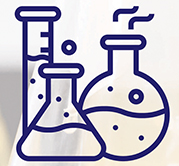In 2021, The Western European agricultural machinery market was worth around USD 37,189.4 million, and the market value will be progressing at a rate of 3.4% from 2022–2030. Moreover, the Central European agricultural machinery market was worth around USD 12,489.2 million in 2021, and the market value will be progressing at a rate of 4.3% from 2022–2030, as per P&S Intelligence.
 |
| Get the sample pages of this report: https://bit.ly/3Hz4s3A |
The major reasons behind the growth of the market are the high cost of farm automation, the increasing price of farm labor, the booming popularity of agricultural machinery, and progressing technology.
In Europe, farming has long been a labor-intensive. Though, as people are migrating to urban regions, the employment cost in this sector has fallen over time. Agriculturalists are progressively utilizing agricultural technology to swap with manual labor, as agricultural technology is a more lucrative, always obtainable, and effective way of agriculture.
The tractor category held the largest market share of approximately 40%, in 2021, as tractors enable agriculturalists to work on larger land areas and pull heavy machines.
Germany has been a pioneer of the farming industry, which is why it is the largest nation in the Western European agricultural machinery market, generating approximately 40% revenue share in 2021.
This agricultural technology has the potential to efficiently address the problem of food shortage. It enables for more effective use of resources including, seeds, fertilizers, water, and agricultural equipment, thus ensuing in a higher crop amount and quality.
Hence, the high cost of farm automation, the growing price of farm labor, the increasing popularity of agricultural machinery, and progressing technology are the major reasons propelling the agricultural machinery industry in Western and Central Europe.




















